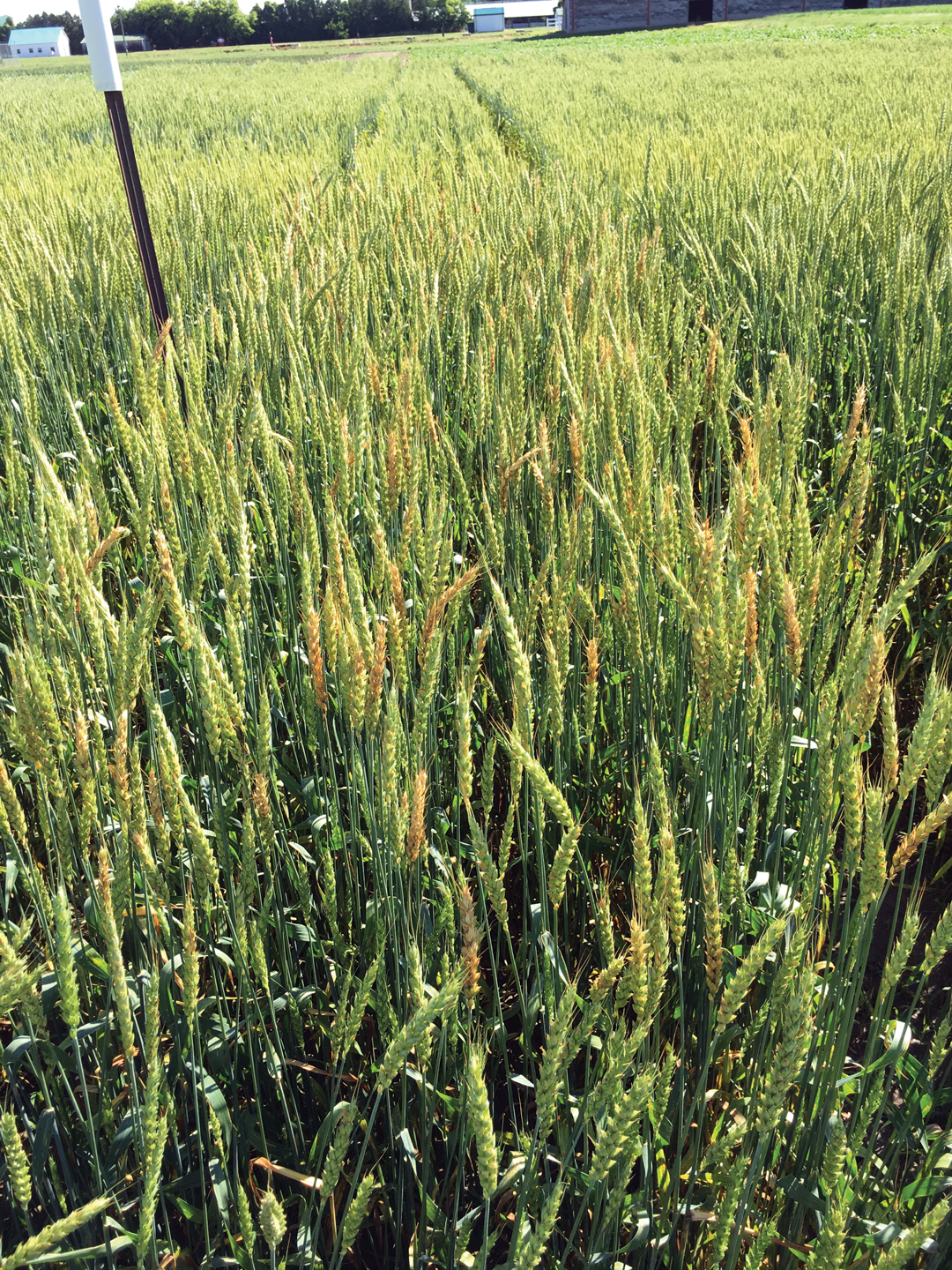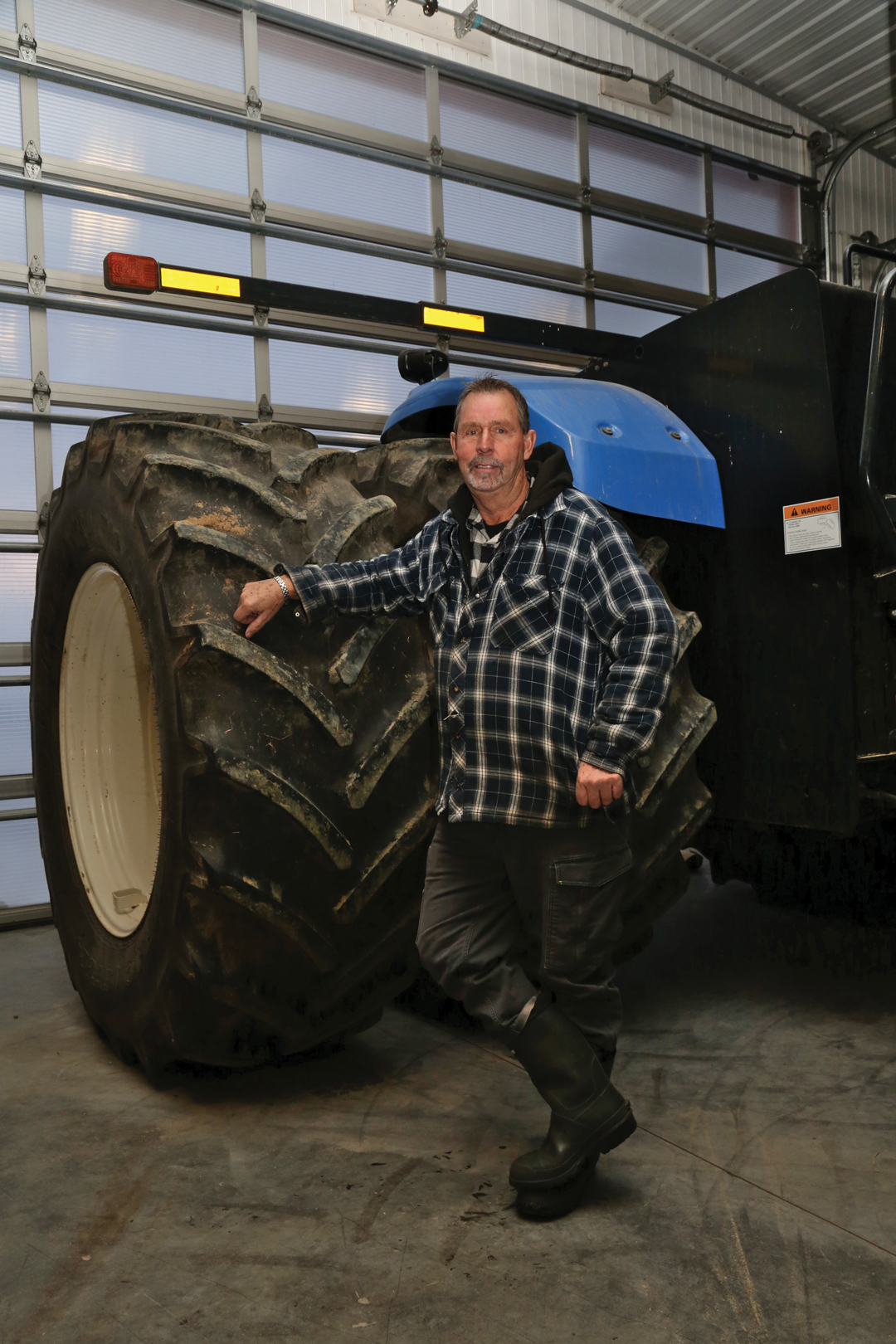FUNGI VERSUS FUNGI
BY ZOLTAN VARADI • PHOTO COURTESY OF RUOXI XIA
In the battle against Fusarium Head Blight (FHB), research from the University of Saskatchewan suggests fungi versus fungi is the undercard to watch.
Mainly affecting corn and cereals, particularly wheat, the fungal disease typically causes millions of dollars in crop loss annually in Alberta alone. Thankfully, the prevalence of FHB has been relatively light in recent years, but it is cyclical in nature and that cycle appears to be accelerating. Cases were once confined to the southeastern part of the province, but the territory and prevalence of FHB are on the increase. A Government of Alberta study reports the fungus occurred in nine counties in 2001 but jumped to 26 in 2016.
“Overall, FHB outbreaks have increased on the Prairies. We have had a general increase in the intensity, which also means an increase in the virulence,” said Vladimir Vujanovic, professor emeritus at the University of Saskatchewan College of Agriculture and Bioresources. “Also, the outbreak cycle is shortened now. At the beginning of the last century, we had outbreaks every 15 years. In the last few decades, we have had outbreaks from four- to six-year intervals.”
The past decade was particularly severe for FHB. According to a study published this past February in the Canadian Journal of Plant Pathology, 2016 was the worst year on record, with an estimated $1 billion in wheat losses across Canada.
Vujanovic has welcome news for farmers anticipating the next outbreak, having identified Sphaerodes mycoparasitica, a new fungal species particularly lethal to all strains of Fusarium that cause FHB. Furthermore, this bio-control agent, native to Saskatchewan, only targets Fusarium and leaves other potentially beneficial micro-organisms unscathed. “It’s different from other products, which are also mycoparasites,” said Vujanovic. “Those are generalists not specific to Fusarium and if you apply it on seeds, they will kill everything in the surrounding environment.”
The mycoparasite also appears to have a leg up on synthetic fungicides in that it can be applied at any time during the crop cycle. This is significant because current treatments, which are only moderately effective, must be introduced during the flowering stage.
“It’s difficult to predict the short window of the Fusarium infection and massively apply pesticides during this period,” said Vujanovic. He added that environmental factors such as temperature and moisture during flowering affect infection rates. This leaves farmers facing a complicated guessing game as to the optimal time at which to apply preventative measures.
“I would say the most efficient and economic approach is applying on seed or even applying on the straw,” he continued. “We consulted with farmers who use no tillage, which means they do not disturb the soil and they throw this debris on the surface to protect moisture and micro-organisms in the soil. But the straw is the substrate for Fusarium to produce the first inoculant or infective spores. So, if you apply it in the fall [on straw] and, if you like, on seed, then you don’t need to think about the season. The mycoparasite will be there as a protector and a killer.”
As an added benefit, Vujanovic said this method of treatment also aids in the decomposition of the straw, which liberates the minerals and nutrients within, and creates a “soup state for bio-fertilizing.”
Tweaks are needed before the agent can be commercialized, said Vujanovic, but he is confident his approach is an effective and sustainable tool against FHB.







Comments